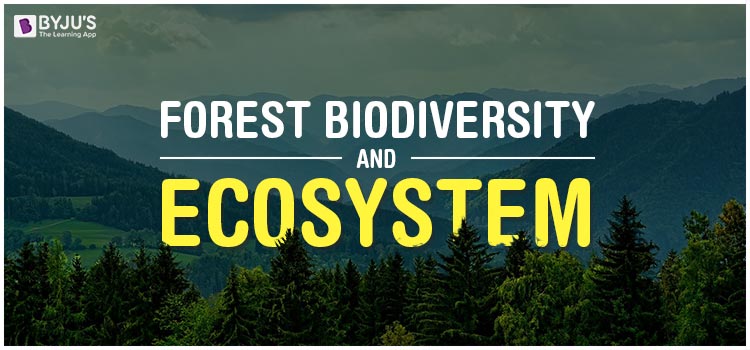
The ecosystem, biomes, biodiversity, and species or population interaction in such communities are an important aspect of Biology. Forest is a large geographical area dominated by trees, animals of various species, aquatic biomes and microorganisms. Study of forest and its various aspects becomes imperative if you want to learn about the biological interaction of species on a large scale.
Forest Biology
Forest Biology is a multidisciplinary field consisting of molecular transmission and population genetics, physical limits of tree height, causes of drought, landscape genomics, forest pathology and entomology, biogeography and ecosystem ecology of the forest.
Forest Biodiversity
Forest Biodiversity or Forest Biological Diversity refers to the study of life forms found in a forest and their ecological roles. Forest is a diverse natural habitat system representing the most sumptuous biological areas on Earth. Nearly 30% of the Earth’s surface is covered with forests but it is dwindling because of commercial exploitation.
As per the Convention on Biological Diversity (CBD), Forest biodiversity is a result of the evolutionary processes which occurred over thousands and millions of years. This process of evolution itself was driven by ecological forces like fire, climate, water, temperature, exposure to light, and ecological phenomena like competition and disturbance.
Forest Ecosystem
Study of interdependent relations of flora and fauna in a forest is termed as Forest Ecosystem. In such ecosystems, the entire interaction happens naturally between all abiotic and biotic components. The ecological potential of any species depends on their habitat requirements like temperature, climate, frugality, their lifespan and, reproducing capacity.
Types of Forest Ecosystem
- Temperate Forest Ecosystem
- The Tropical Rainforest Ecosystem
- Boreal or Taiga Forests
There are Producers who prepare food for the entire forest ecosystem. Trees and plants are thus called the primary producers. Consumers are the one who cannot produce their own food and thus depend on producers for their food and energy sources. Organisms that only eat plants are referred to as primary consumers. For example, herbivores such as deer and rabbits are primary consumers. Secondary consumers feed on herbivores and are called as Carnivores. Omnivores are the consumers that feed both on plant and animals.
Organisms like worms, microbes, fungi, ants, and other bugs are called Decomposers as they break down the plant and animal wastes into small particles which ultimately blends with the environment. Human beings are omnivores as they feed on both flora and fauna and thus are a part of this forest ecosystem.
Forest Biome
Forests can be divided into 5 main categories, depending on the types of trees found in them. They are –
1) Coniferous Forest
As the name suggests, the trees found in these forests mainly consists of cone-bearing trees like the spruce, pine, fir, and hemlock. These are found mostly in the northern parts of North America, Asia, and Europe.
2) Deciduous Forest
The trees of these forests are broadleaved and are shed between late summer to early autumn. The leaves are usually green but later acquires yellow, red and orange colours gradually. These forests are found in America, Western and Central Europe, and Northeastern Asia where the winters are cold and summers are warm.
3) Mixed Forests
Deciduous and Coniferous trees as both types constitute mixed forests, which are mostly found in mountainous areas. These are found almost every part of the world.
4) Mediterranean Forests
They are also called scrublands as its temperature is suitable for short oaks and pines to grow. The Mediterranean forest contains a wide variety of wildflowers and insect-eating birds. This forest is also termed as “maquis”.
5) Tropical Rainforest
These forests are situated in the areas with hot temperatures like South America, Africa, Asia and Australia. Thus they are called Tropical and due to continuous rainfall throughout the year, they are called Rainforests. It is a habitat for various insects, colourful birds and mammals.
For more information about Forest Biodiversity and Ecosystem, login to BYJU’s.

Comments